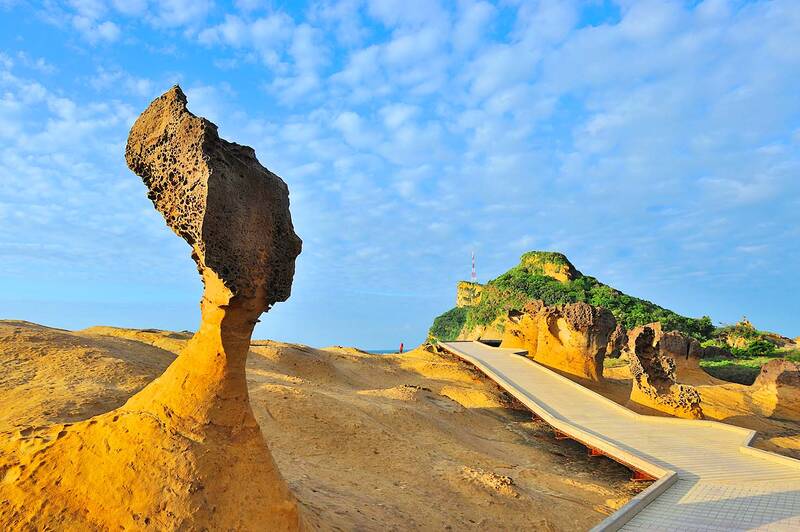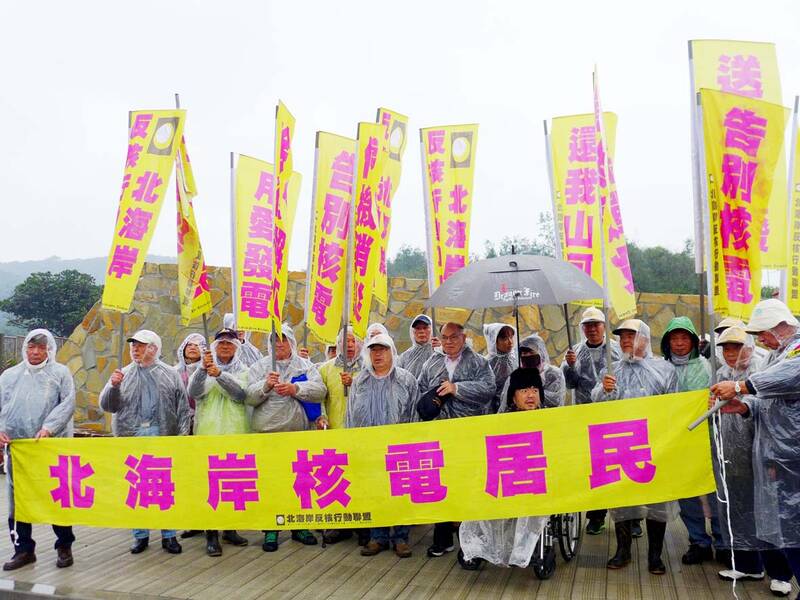Much noise has been made lately on X (Twitter), where posters both famed and not have contended that Taiwan is stupid for eliminating nuclear power, which, the comments imply, is necessary to provide the nation with power in the event of a blockade. This widely circulated claim, typically made by nuclear power proponents, is rank nonsense.
In 2021, Ian Easton, an expert on Taiwan’s defenses and the plans of the People’s Liberation Army (PLA) to break them, discussed the targeting of nuclear power plants in wartime (“Ian Easton On Taiwan: Are Taiwan’s nuclear plants safe from Beijing?”, April 12, 2021). The plants can easily be knocked out in wartime. In fact, as Easton notes, it is PLA policy to target them.
A manual released in 2014 advises using anti-tank missiles fired from helicopters, which are theoretically capable of precision strikes, to take them offline without destroying them. Today, with the much greater precision afforded by drones and other smart munitions, it will not be difficult for the PLA to take them offline. Taking them offline without causing them to melt down, though, is another issue entirely, as Easton notes. He adds that a 2015 manual exhorts troops to wash and continue their conquests in the event of a radiological disaster.

Photo courtesy of the New Taipei City Government
Sialiao Beach (下寮牽罟), next to Yehliu Geopark (野柳風景特定區) in New Taipei City, is a possible landing site. Taiwan’s second nuclear plant sits right there. If PLA troops land on that beach, can the local military risk shooting at them? Errant weapons are a hazard on every battlefield. When missiles or aircraft targeting the area are downed, they may well hit the nuclear plant. All the northern nuclear plants suffer from this danger: the Ukraine war has produced a steady stream of missiles knocked down by anti-missile systems crashing far from their intended targets, or by expended anti-missile munitions themselves. Remember the time an S-300 missile from Ukraine landed in Poland?
VULNERABILITIES
A May 2021 piece in the Taipei Times by Henry Sokolski, Executive Director of the Nonproliferation Policy Education Center in Arlington, Virginia, highlights both the uselessness and fearsome vulnerability of the plants. Even a strike in the parking lot of a nuclear plant intended as a warning would likely force the government to shut them down. Locals would clog the roads fleeing the area, worsening command and control problems for the military. In the event of a strike that caused a radiological disaster, he observes, millions would have to be evacuated (to where?).

Photo: Lee Ya-wen, Taipei Times
Sokolski references studies of radiological disasters in Taiwan his center has done to back his argument, saying that “if Taiwan is serious about its national security, it will replace all of these potential radiological targets with non-nuclear generators as soon as possible.”
Another issue is that Taiwan’s nuclear power plants must have a constant supply of power to circulate water to cool the spent fuel rods sitting above their reactors and to conduct operations. In wartime they may not merely become piles of dead concrete and steel if shut down, but net burdens on the electrical grid as operators scramble to keep them supplied with outside power. This exact problem occurred during the fighting in Ukraine around the Zaporizhzhya Nuclear Power Plant, which at one point was cut off from outside power for four months.
The nuclear power plants also represent unexcelled targets for strategic blackmail and terrorism. Bennet Ramberg, the author of two books on the topic, points out that aggressors could threaten nuclear power plants or their associated facilities, to influence decision-making by targets. It could bomb them to create radiological disasters that would render land unproductive and kill the soldiers and civilians in the area.
Moreover — especially in the Taiwan case — nuclear plant personnel sympathetic to the attacking power could sabotage the plants from within in wartime. That would cause a crisis that could then be blamed on local actors.
The crowd that argues that Taiwan must have nuclear power in the event of a blockade never talks about grid resilience, but that will be a major problem for grid operators. Taiwan has come a long way since the July 29, 1999 blackout, in which the loss of a single electricity pylon to a landslide plunged the entire island into darkness. A US expert panel reviewing the blackout described the island’s power system as “the most unstable in the world.” Though we are in the midst of a 10-year resilience enhancement program, serious problems remain.
SUBSIDIZING HIGH-CARBON ECONOMY
Nuclear power in Taiwan, as I have noted elsewhere, exists merely to accessorize Taiwan’s high carbon, subsidy-fueled economy, like a bright scarf making a dingy jacket look snazzy. According to Taipower figures from this year, nuclear plants produced just 7 percent of Taiwan’s electricity. Sadly, most of Taiwan’s power comes from fossil fuels. The law mandates that a 60 day supply of fossil fuels be maintained, but wartime demands for power and fuel will likely far exceed the government’s minimums. The temptation will be to overwork Taiwan’s aged nuclear plants.
All Taiwan’s power plants, but especially the nuclear plants, suffer from the problem of imported parts. Taiwan nuke plants are old, making parts both hard to source and expensive. Even simple items such as bolts cost thousands of US dollars and take weeks to arrive. Blockade or no, routine maintenance must be performed, and reactors shut down and their parts replaced. How, in a blockade?
An apparent but unvoiced assumption of the nuclear power advocates is that the PRC will blockade Taiwan, but not attack it. That is not PLA doctrine. According to military writings in the People’s Republic of China (PRC) described in the annual US Department of Defense reports, a maritime blockade will be accompanied by strikes on the island to force its surrender. The longer any blockade goes on, the greater the temptation will be to end it by expanding the range of targets and the lethality of munitions. In a general invasion, tens of thousands of drones will be used to strike targets across the island. In that case, probably both the grid and Taiwan’s power sources will all be rendered inoperable.
Taiwan urgently needs to refocus its power debates from economic production to national security. Power policy must prioritize war needs. Consider: in July of 2020 the Council of Agriculture (COA) sent down a drastic new regulation making it illegal to install solar systems on farms smaller than two hectares. Instead of enabling the development of a more resilient, decentralized system of power sources, the COA crippled the emerging solar PV market in Taiwan. That decision needs to be reversed, and the installation of renewable capacity must be accelerated. In the event of a blockade, it may be the only reliable source of power.
It is not difficult to see why the pro-Taiwan side wants the reactors shut down. Building nuclear reactors on an island subject to terrorism and war from the PRC — building them right on potential invasion beaches (!) — along with quakes and tsunamis, was never a very bright idea. As Taiwan’s nuclear plants age and PLA capabilities expand, it is looking less intelligent every day.
Notes from Central Taiwan is a column written by long-term resident Michael Turton, who provides incisive commentary informed by three decades of living in and writing about his adoptive country. The views expressed here are his own.

As I finally slid into the warm embrace of the hot, clifftop pool, it was a serene moment of reflection. The sound of the river reflected off the cave walls, the white of our camping lights reflected off the dark, shimmering surface of the water, and I reflected on how fortunate I was to be here. After all, the beautiful walk through narrow canyons that had brought us here had been inaccessible for five years — and will be again soon. The day had started at the Huisun Forest Area (惠蓀林場), at the end of Nantou County Route 80, north and east

Exceptions to the rule are sometimes revealing. For a brief few years, there was an emerging ideological split between the Democratic Progressive Party (DPP) and Chinese Nationalist Party (KMT) that appeared to be pushing the DPP in a direction that would be considered more liberal, and the KMT more conservative. In the previous column, “The KMT-DPP’s bureaucrat-led developmental state” (Dec. 11, page 12), we examined how Taiwan’s democratic system developed, and how both the two main parties largely accepted a similar consensus on how Taiwan should be run domestically and did not split along the left-right lines more familiar in

Specialty sandwiches loaded with the contents of an entire charcuterie board, overflowing with sauces, creams and all manner of creative add-ons, is perhaps one of the biggest global food trends of this year. From London to New York, lines form down the block for mortadella, burrata, pistachio and more stuffed between slices of fresh sourdough, rye or focaccia. To try the trend in Taipei, Munchies Mafia is for sure the spot — could this be the best sandwich in town? Carlos from Spain and Sergio from Mexico opened this spot just seven months ago. The two met working in the

This month the government ordered a one-year block of Xiaohongshu (小紅書) or Rednote, a Chinese social media platform with more than 3 million users in Taiwan. The government pointed to widespread fraud activity on the platform, along with cybersecurity failures. Officials said that they had reached out to the company and asked it to change. However, they received no response. The pro-China parties, the Chinese Nationalist Party (KMT) and Taiwan People’s Party (TPP), immediately swung into action, denouncing the ban as an attack on free speech. This “free speech” claim was then echoed by the People’s Republic of China (PRC),